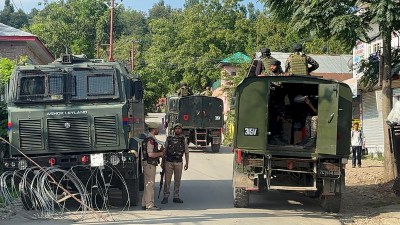History and facts behind HPs petition
In 1944,the erstwhile composite state of Punjab decided to construct Bhakra dam across the river Satluj for which it approached the Raja of Bilaspur.
In 1944,the erstwhile composite state of Punjab decided to construct Bhakra dam across the river Satluj for which it approached the Raja of Bilaspur. The Raja had no objection to the proposal provided Bilaspur was adequately compensated. In 1948,Bilaspur merged with the Union of India and came to be administered by Government of India as Part C state. In 1954,Bilaspur was merged with Himachal Pradesh.
An agreement was signed between Punjab and Rajasthan on January 13,1959 for executing Bhakra Nangal Project in which share of Punjab and Rajasthan was to be in the ratio of 84.78 and 15.22,respectively. The areas of Kangra,Kullu,Lahaul and Spiti among others of composite Punjab were merged with the Union Territory of Himachal Pradesh on Novermber 1,1966 with the enforcement of Punjab Reorganisation Act,1966. The erstwhile Union Territory of Himachal Pradesh attained Statehood on January 25,1971.
The claim of Himachal Pradesh is based on on two points:
n With the coming of Punjab Reorganisation Act,7.19 per cent population,which was earlier part of Punjab (areas of Kangra,Kullu,Lahaul and Spiti among others) became part of the Union Territory of Himachal Pradesh and thus,Himachal Pradesh is entitled to 7.19 per cent share of assets,liabilities and rights of composite Punjab.
n Since the projects are located in Himachal Pradesh,hence,the state is entitled to 12 per cent free power royalty.
In June 1996,the then Congress government led by Virbhadra Singh filed a Suit in the Supreme Court raising demand for 12 per cent share of the net power generated in Bhakra Nanagal and Beas Projects free of cost from the date of commissioning of these projects.
It also demanded 7.19 per cent share of power generated in Bhakra Nangal and Beas Projects out of the share of composite Punjab from the appointed dayNovember 1,1966 or from the date of commissioning of these projects,whichever is later,due to transfer of population of transferred areas from Punjab to Himachal Pradesh in 1966.
In a June 28,1979 report,the then chairman of Central Electricity Authority,K S Subrahmanyam,had recommended that Himachal Pradesh government should be given 7.19 per cent share in the power generated by BBMB projects. In addition,Himachal Pradesh should be compensated for surrendering its right of power generation by an allocation of 3 per cent of energy generated free of cost.
A meeting held on April 2,1981 under the chairmanship of P M Belliappa,joint secretary,Ministry of Energy,pointed out that although there existed on record some decision to share Bhakra power,this was an ad hoc decision and the Centre was required to determine the final share as per the provisions of the Punjab Reorganisation Act,1966.
In a letter of August 16,1983,Sarla Gopalan,Ministry of Energy,conveyed to BBMB chairman the Centres decision that Himachal Pradesh will have to be deemed a successor state in the same manner as the states of Punjab,Haryana and Rajasthan in accordance with provisions of the Punjab Reorganisation Act.
The quantum of benefits from Bhakra and Beas projects presently allocated to Himachal Pradesh was on an ad hoc basis and a final decision on the sharing of the rights and liabilities of all the successor states in the two projects has not been taken.
Himachal has been getting 2.5 MW of power from Bhakra,15 MW ad hoc share from Dehar and nothing from Pong Dam.
Himachal in its petition had said the Centre is yet to discharge its duty under Section 78 (1) of the Act by apportioning the rights and liabilities of successor states in relation to BBMB projects.












